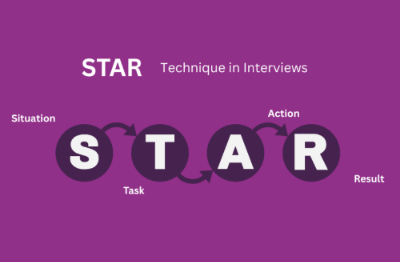Economic Outlook Roundtable: What Yorkshire’s Finance Leaders Are Saying About Growth, Hiring and the Road Ahead
Senior finance professionals from across Yorkshire recently joined Sharp Consultancy for an exclusive roundtable discussion featuring an economic update from Paul Mount, Economist and Deputy Agent at the Bank of England. The session provided a timely, in-depth look at the UK’s economic landscape — followed by a candid conversation about what businesses are experiencing on the ground.The picture that emerged was one of cautious realism. While official forecasts point to easing inflation and a gradual return to stability, many organisations across the region continue to navigate weak demand, rising labour costs, tightening legislation and stalled investment projects. Yet despite these pressures, there remains a strong sense of resilience and adaptability — qualities that have long defined the Yorkshire business community. At Sharp Consultancy, our specialist finance and accountancy teams speak daily to employers and professionals across commerce, industry, public practice and the not-for-profit sector. What we heard in this session closely aligns with the insight we gather from clients and candidates across the region. Below, we explore the key themes shaping business confidence, recruitment activity and the outlook for 2026. Inflation Is Easing, but Confidence Has Yet to Follow The Bank of England outlined its latest central forecast: Inflation expected to gradually return toward the 2% target. GDP growth set to remain modest but stable through 2026. Interest rates anticipated to settle around 3.5% based on market expectations. Unemployment projected to hold near 5%. However, the sentiment in the room was clear: despite improving headline numbers, confidence across most sectors remains fragile. Many organisations described the environment as “flat” — not contracting, but unable to capitalise fully on opportunities due to economic uncertainty. Sharp Consultancy continues to see this play out: businesses are stabilising rather than expanding, focusing on cash management, operational efficiency and carefully controlled hiring. Labour Costs Continue to Reshape Workforce Strategies Wage pressures were a recurring theme throughout the discussion. Employers highlighted: Significant increases to the National Living Wage. Higher employer National Insurance contributions. Expected future changes to minimum wage equalisation for younger workers. Rising cost and complexity associated with apprenticeships. These factors are pushing up costs at every level of the workforce and reshaping recruitment behaviours. Across Sharp Consultancy’s accountancy and finance divisions, we are seeing: Strong demand for replacement hires where roles are business critical. Lower volumes of growth hires, particularly in commercial and project-focused appointments. Clients increasingly prioritising candidates who bring breadth, adaptability and long-term value. Construction & Infrastructure: Capacity Under Pressure Leaders from the construction sector painted a challenging picture — one mirrored by many Sharp Consultancy clients operating across the wider built environment. Key themes included: Planning delays of 9–10 months, particularly related to the Building Safety Act. Businesses holding on to workforce capacity despite reduced margins — a strategy that may not be sustainable in 2026. Difficulty justifying new capital expenditure under IFRS when future cashflows are uncertain. Concerns that smaller subcontractors may not withstand prolonged delays or reduced demand.Yet, attendees also highlighted that construction could become a catalyst for economic recovery — provided policy reform and planning improvements unlock stalled projects. Manufacturing: Rising Costs and Shifting OperationsLeaders representing manufacturing shared concerns around: Rising energy and operational costs. Increased frequency of site closures and offshoring. Significant challenges in attracting engineering and technical talent. Early signs of contraction in several sub-sectors, with aerospace a notable exception. These pressures reinforce the growing importance of finance leaders who can model scenarios, manage volatility and guide long-term planning — roles Sharp Consultancy continues to support across the manufacturing landscape. Charity & Public Sector Organisations Facing Acute Strain For organisations reliant on local authority funding, the challenges are particularly stark. Attendees reported: Government and council funding caps. Rising NI, wage costs and VAT changes adding millions to annual budgets. Increasingly complex consultation requirements under forthcoming employment legislation. The likelihood of significant cuts to the frontline services in the months ahead.Sharp Consultancy’s continues to work closely with organisations navigating these pressures, supporting clients through restructuring, recruitment challenges and financial planning needs. Recruitment Outlook: Stability Over Expansion Across sectors, the message was consistent: 2026 is expected to be cautious, steady and focused on maintaining capability rather than expanding headcount. Attendees forecast: Workforce levels remaining broadly flat. Hiring driven by essential replacement roles. Transformation, M&A and large-scale project hiring likely to remain subdued. Improved recruitment confidence only once interest rates and policy direction stabilise. For employers, this means sharper competition for high-quality finance talent — an area where Sharp Consultancy’s specialist teams continue to provide targeted, market-led support. What Comes Next? A Slow but Steady Rebuild Despite the challenges discussed, the roundtable ended on a constructive note. Many leaders believe that once interest rates settle and stalled investment begins to move, the region could see a more meaningful upturn — potentially from 2026 onwards. Yorkshire businesses have proven time and again that they are resourceful, resilient and ready to adapt. Sharp Consultancy remains committed to supporting them through every stage — whether stabilising teams, recruiting future leaders, or navigating the next phase of growth. If you’d like to understand what these economic trends mean for your business or team, speak to our specialist consultants for a confidential market discussion. Contacts Us
Read article



.png)
.png)